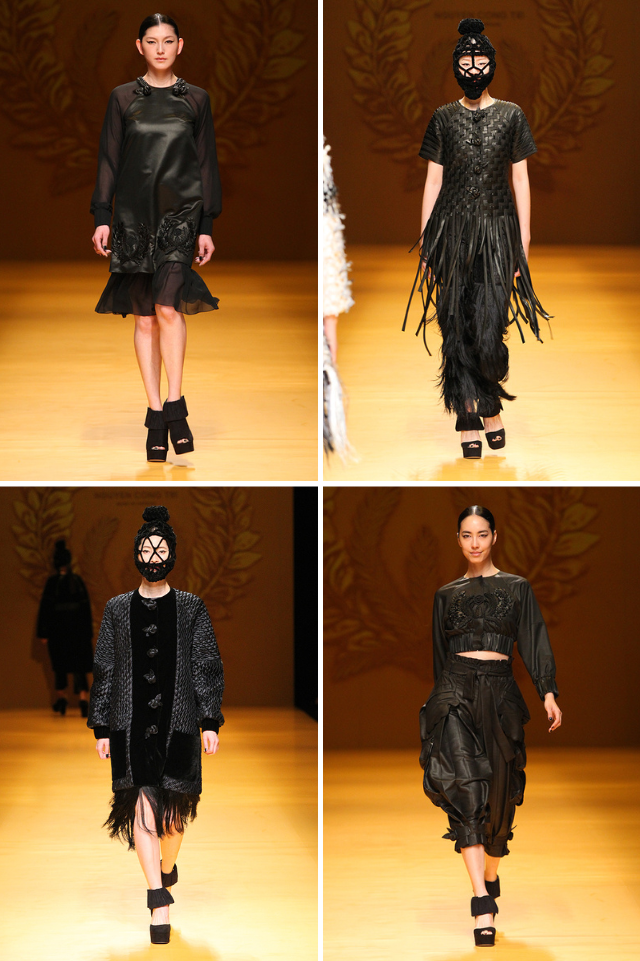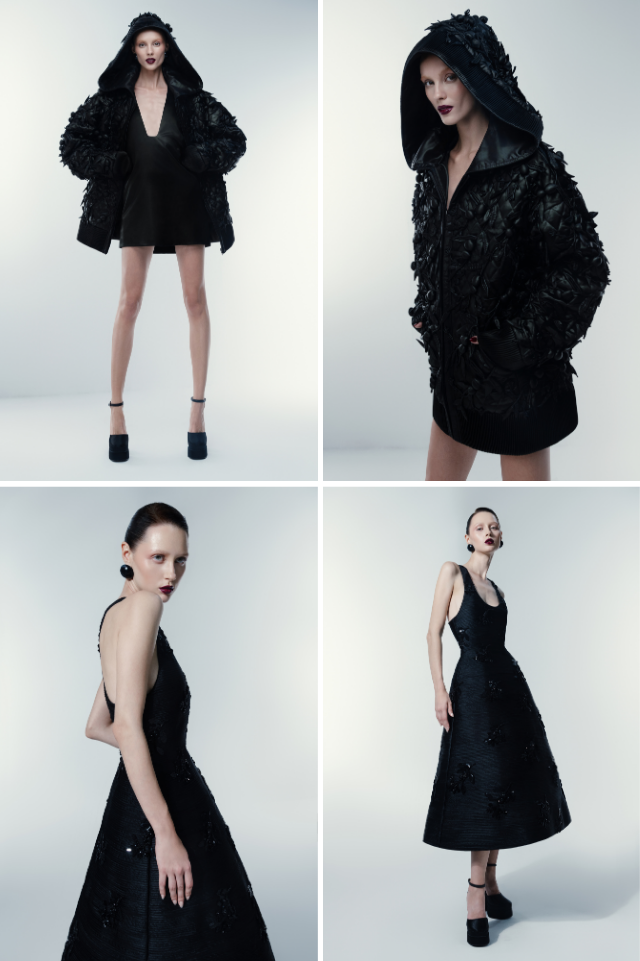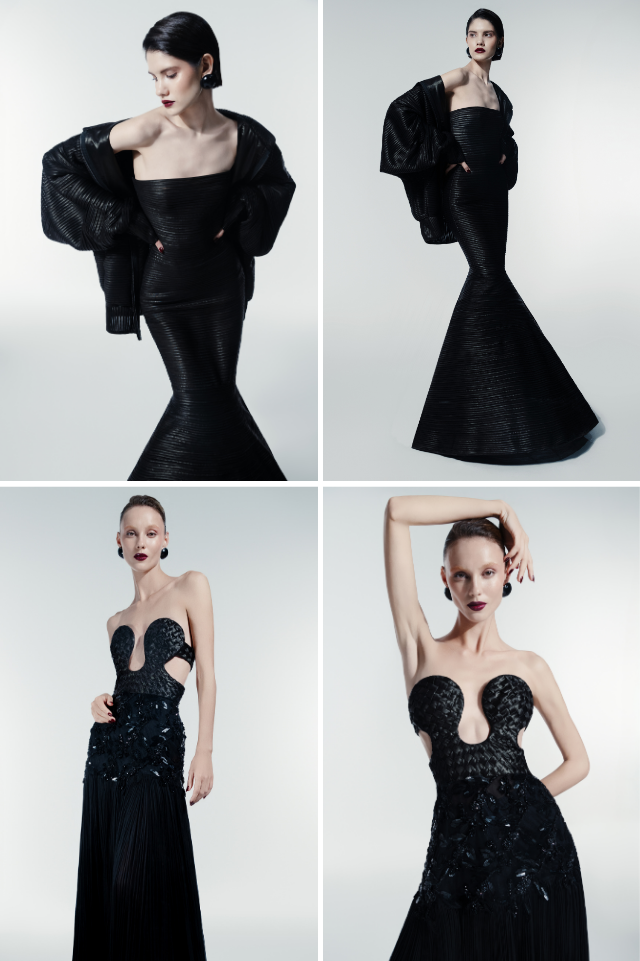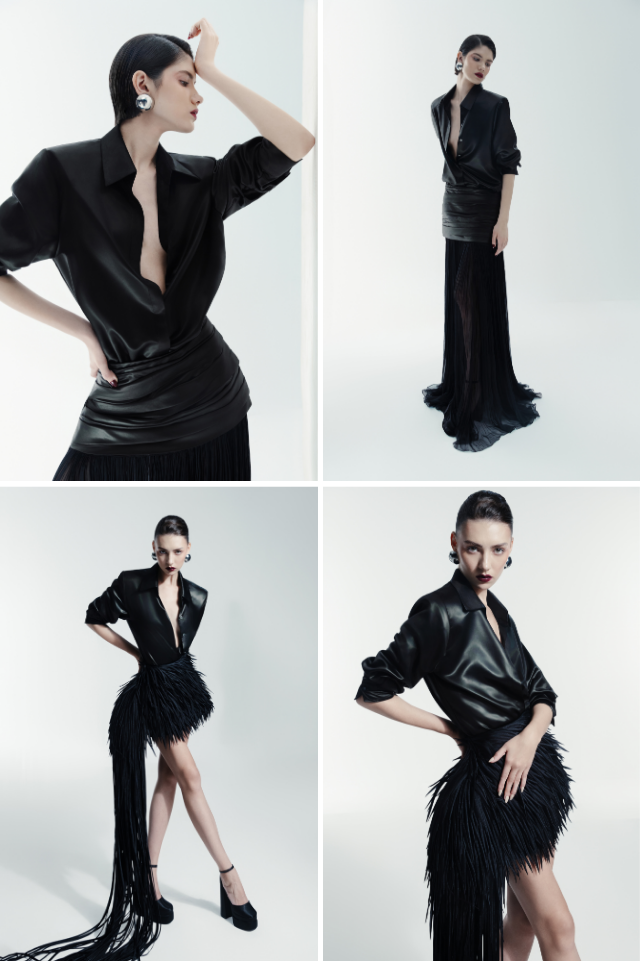Lãnh Mỹ A, the distinctive black silk from Vietnam’s Mekong Delta, has long remained a quiet symbol of traditional skill and cultural significance. Through the work of designer Nguyen Cong Tri, this heritage textile is finding renewed purpose in contemporary designs. Lãnh Mỹ A has become a central part of his design language, a bridge between past and present.
No.9 – Lúa
Nguyen Cong Tri’s No.9 collection, “Lúa”, meaning “rice”, was presented at Tokyo Fashion Week in 2016. More than an international debut, it marked an important moment in reimagining the global perception of Vietnamese fashion.

While the collection paid tribute to the agricultural foundation of the nation, it was Lãnh Mỹ A that centred the narrative. The silhouettes were restrained and architectural, drawing from modernist principles.

Yet embedded within them were quiet gestures toward rural life: pleated structures reminiscent of rice rows, wide-brimmed forms that evoked the harvest. The black silk, with its depth and hand-finished sheen, lent a material gravity to the garments.

In this context, Lãnh Mỹ A was not treated as a nostalgic symbol, but as a contemporary medium of expression.
Fall-Winter 2025
Nearly a decade later, in the Fall-Winter 2025 collection, CONG TRI returned to Lãnh Mỹ A with a refined vocabulary. The collection introduces elongated silhouettes and expanded volumes, expressed through a controlled palette centred on black. Crafted entirely in hand-dyed Lãnh Mỹ A silk, the pieces balance structure with movement, precision with softness.

Surface treatments are subtle: appliqué, hand-woven detailing, and minimal embellishments that emphasise texture without excess.

Coats, dresses, and separates are constructed with a focus on line and form, allowing the natural weight and matte sheen of the silk to guide the silhouette. Each garment is designed to hold presence through material integrity and artisanal discipline.

The collection marks not a return to tradition, but a continuation, positioning Lãnh Mỹ A as a living textile capable of evolving within a contemporary framework. In these garments, heritage is not preserved as history, but reinterpreted through form.
A Contemporary Dialogue with Craft
CONG TRI continued engagement with Lãnh Mỹ A reflects a considered approach to craftsmanship, one that prioritises authenticity, process, and cultural continuity. By working directly with the only remaining artisan who still practices the traditional dyeing methods, designer Nguyen Cong Tri ensures that the material is honoured not only in concept, but in execution.
The focus is not on re-creating the past, but on allowing its techniques and values to inform contemporary design. Each decision, from the sourcing of materials to the construction of a garment, is approached with sensitivity to context, form, and intention. The resulting work is quiet in its complexity, balancing cultural specificity with a broader, more universal language of design.

At a time when references to tradition are often used for effect, CONG TRI offers a more grounded perspective, rooted in respect, shaped by experience, and open to evolution. The use of Lãnh Mỹ A is not about preserving a memory, but about allowing it to continue, adapted, reinterpreted, and carried forward with purpose.

